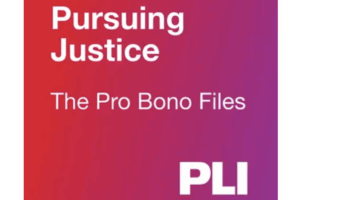 In last week’s column, I discussed the importance of seeking out informational interviews as part of a job search strategy or career transition. This week, I want to include a complementary piece on how to properly network, build networking contacts, and create an effective networking strategy on LinkedIn.
In last week’s column, I discussed the importance of seeking out informational interviews as part of a job search strategy or career transition. This week, I want to include a complementary piece on how to properly network, build networking contacts, and create an effective networking strategy on LinkedIn.
Networking in the digital age is significantly easier than in the predigital age. This is because you have wide access to a larger portfolio of potential contacts — former co-workers, mentors, high-profile executives (such as the general counsel at Starbucks), business leaders, law firm partners, legal commentators and journalists, and fellow law school alumni. These individuals are merely a click away on LinkedIn and can easily loop us into a networker’s paradise.
Building a strategic network requires formulating relationships, sending purposeful messages, and creating meaningful engagement. Networking is not a race to build more followers on LinkedIn or engage in a “comment-for-comment” quid pro quo on your content. Networking is a long-term strategy with a tactical process involved. Yet, and probably like you, I get dozens of misguided and misdirected messages on LinkedIn every week.

Stand With Survivors: Legal Tools To Make A Real Difference This DVAM
Enhance your legal skills to advocate for survivors of intimate partner violence.
Here’s an example of recent networking gone wrong on LinkedIn:
During the last days of December, I received a message in my inbox with an attempted networking call-to-action from a connection on LinkedIn: “Wendi, I’d like to introduce you to a UF graduate all-star. ____ was a student leader at (insert fraternity name here) and left his mark on future generations there. He works in support[ing] the legal industry. Of course, I thought of you when he told me what he is doing. Please review his profile and take his phone call as he will be reaching out to you soon.”
Typically, people reach out to me at the very end of the year to kick off their job search. The message did not seem to have a purpose other than letting me know the recent grad supported the legal industry (he marketed software to firms). So, I let my connection (a financial services professional who added me a few years ago on LinkedIn) know I was out on a holiday break and that I worked with senior attorneys, executives, and C-suite/board leaders for career services. I provided him with a referral to a colleague who was a more appropriate fit for him. The next response came in from the recent college grad:
“I appreciate the introduction. It’s a pleasure to continue to grow my Gator Alumni network. Wendi, it is very nice to meet you via LinkedIn and I hope you had a nice holiday. A few months back, I spoke with ____ about expanding my professional network and he has been helping to connect me with fellow colleagues in the legal space. If you have 15 minutes come January, I’d love to speak with you to learn about your practice as well as share some information about what it is I am doing. Please let me know what date might work.”

Pursuing The Pro Bono Story: A Conversation With Alicia Aiken
This Pro Bono Week, get inspired to give back with PLI’s Pursuing Justice: The Pro Bono Files, a one-of-a-kind podcast hosted by Alicia Aiken.
The initial sender was the past president of the same fraternity chapter nearly 40 years ago and had genuine motives and interest for his young protégé. However, he didn’t create a message with a purpose or address it to a targeted recipient. Instead, he quickly ran a search of his connections with “attorney” or “lawyer” in their headlines and sent out the same blanket message to each of those connections, hoping for something to stick. If you skim my LinkedIn headline and about/summary section, you’ll learn in less than 30 seconds what I do and who I serve. You’ll also quickly realize I’m not a Gator alumnus (I graduated from Florida State University in 1999), I’ve never owned my own law firm, and I haven’t held a legal role since I left practicing law in 2015.
Since the initial outreach was not targeted correctly, the outcome resulted in a new college grad asking to set up a 15-minute coffee chat with someone who would never be a potential client — a waste of time for both of us. The original message also lacked purpose, strategy, and clear messaging, which defies the goal of networking.
As the recipient of these messages (and repeated faux pas) on a weekly basis, it feels more like a pepper spray approach of hitting “connect” with the same cookie-cutter messages. While I realize many utilize automation software as part of the sales networking funnel and marketing strategy, lawyers are in a business (and industry) of building relationships. That means we connect purposefully and with intent. We know time is money and we also realize that relationship building is something that takes credibility and trust to foster.
A network is only as strong as the connections you have in it — and while we all welcome new connections, messages should have a purpose for that call-to action.
Here’s my simple advice for LinkedIn networking: be sure you read through the person’s profile thoroughly before you “pitch” them or ask for a coffee chat. Don’t send mass connection requests and cookie-cutter connection messages. Don’t assume that each person will want to engage in a “15-minute call” for networking. Instead, engage virtually and foster synergy. Think about how you’ll add value and create a truly authentic connection. Your LinkedIn inbox provides enormous networking capabilities, but you must use it wisely.
Remember, you want the right people connected to you as well as the right people in your network — otherwise networking loses its meaning and goal.
Wendi Weiner is an attorney, career expert, and founder of The Writing Guru, an award-winning executive resume writing services company. Wendi creates powerful career and personal brands for attorneys, executives, and C-suite/Board leaders for their job search and digital footprint. She also writes for major publications about alternative careers for lawyers, personal branding, LinkedIn storytelling, career strategy, and the job search process. You can reach her by email at [email protected], connect with her on LinkedIn, and follow her on Twitter @thewritingguru.